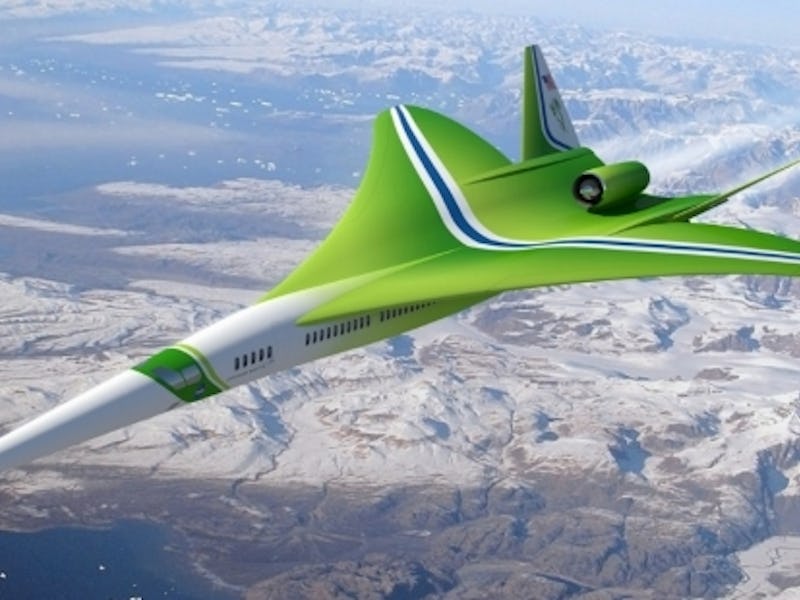Supersonic Plane Regulations Mean Years-Long Layover for Your Ultra-Fast Travel Plans
As the race for supersonic travel picks up, regulations still abound.

A two-hour flight from New York to Los Angeles sounds good to both travelers and plane manufacturers alike. A lack of technology isn’t what’s holding this up; pesky, yet necessary, regulations are.
The Federal Aviation Administration (FAA) regulations don’t allow for commercial supersonic travel over land, not necessarily because the crafts themselves are unsafe for riders, but because the agency is concerned about the noise pollution and safety of citizens on the ground when a sonic boom rattles through the air.
Sonic booms are incredibly loud and can even break windows just from the crack of the aircraft traveling faster than the speed of sound. Instances that extreme only happen when fighter jets travel very close to the ground, but even planes several hundreds of feet above the ground have been known to produce sounds akin to an explosion.
According to a rule set by the FAA in 2008, the agency requires supersonic planes to meet the same standards set by subsonic planes, which are laid out in this bureaucratic document.
The windows of the Center for Social Communication of the Brazilian Air Force shatter during a supersonic boom demonstration.
That means supersonic jets can’t produce more than the occasional dull roar residents might hear from the skies from time to time. Manufacturers don’t have the technology to make that happen just yet, but they’re working on it.
Earlier this year, NASA awarded Lockheed Martin $20 million to produce an experimental jet that the manufacturer says would produce sounds 100 times quieter than the famous, now-retired Concorde supersonic plane and could meet the FAA’s noise requirements. The program is part of NASA’s N+2 program focusing on aircraft two generations down the line that will transform consumer airspace.
“To achieve revolutionary reductions in supersonic transportation airport noise, a totally new kind of propulsion system is being developed,” said Michael Buonanno, Lockheed Martin manager of the NASA N+2 program, back in 2014. “We are also exploring new techniques for low noise jet exhaust, integrated fan noise suppression, airframe noise suppression and computer customized airport noise abatement.”
An illustration shows the sound wave effect around a supersonic boom.
The Concorde was the only commercial jet to make trips to the U.S. and it operated mostly over the Atlantic Ocean, taking passengers from London to New York at speeds of Mach 2.04. Lockheed Martin has said its current design is made to travel at a slower Mach 1.7 in order to try to meet those FAA standards.
Boeing had plans in the 1960s to build a commercial plane that could travel at cruising speeds of Mach 2.7, but the project was cancelled due to these very noise concerns.
Pollution has also been a big hurdle for supersonic aircraft, especially after a jet flew through the exhaust of the Concorde in the 1990s and revealed the kind of damage the super-fast plane was dealing to the ozone.
“The results have made a lot of people nervous,” said Paul Wennberg, a research associate in chemistry, told the Harvard Gazette in 1996. “The surprising number of particles are very tiny – millionths of an inch in size. We have no idea what they are made of, and they could alter our predictions of how the new commercial aircraft will affect ozone levels and, perhaps, global warming.”
NASA is also investing in research that will mitigate future exhaust emissions from these supersonic aircrafts, especially since the agency envisions a future fleet of planes transporting consumers across the world in mere hours.